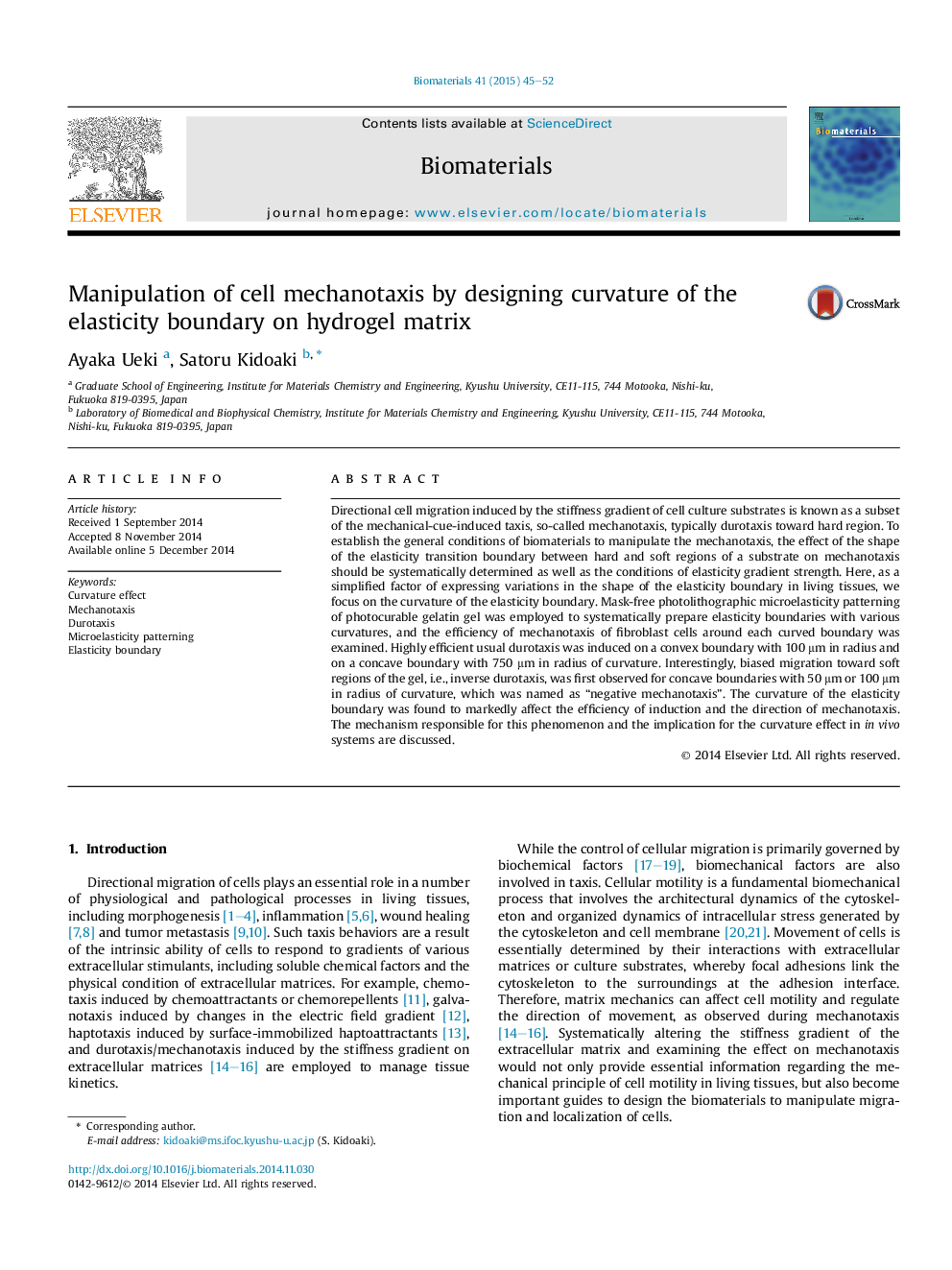| کد مقاله | کد نشریه | سال انتشار | مقاله انگلیسی | نسخه تمام متن |
|---|---|---|---|---|
| 6486286 | 424 | 2015 | 8 صفحه PDF | دانلود رایگان |
عنوان انگلیسی مقاله ISI
Manipulation of cell mechanotaxis by designing curvature of the elasticity boundary on hydrogel matrix
ترجمه فارسی عنوان
دستکاری مکانیوتاکسیس سلول با طراحی منحنی مرز کششی بر روی ماتریکس هیدروژل
دانلود مقاله + سفارش ترجمه
دانلود مقاله ISI انگلیسی
رایگان برای ایرانیان
موضوعات مرتبط
مهندسی و علوم پایه
مهندسی شیمی
بیو مهندسی (مهندسی زیستی)
چکیده انگلیسی
Directional cell migration induced by the stiffness gradient of cell culture substrates is known as a subset of the mechanical-cue-induced taxis, so-called mechanotaxis, typically durotaxis toward hard region. To establish the general conditions of biomaterials to manipulate the mechanotaxis, the effect of the shape of the elasticity transition boundary between hard and soft regions of a substrate on mechanotaxis should be systematically determined as well as the conditions of elasticity gradient strength. Here, as a simplified factor of expressing variations in the shape of the elasticity boundary in living tissues, we focus on the curvature of the elasticity boundary. Mask-free photolithographic microelasticity patterning of photocurable gelatin gel was employed to systematically prepare elasticity boundaries with various curvatures, and the efficiency of mechanotaxis of fibroblast cells around each curved boundary was examined. Highly efficient usual durotaxis was induced on a convex boundary with 100 μm in radius and on a concave boundary with 750 μm in radius of curvature. Interestingly, biased migration toward soft regions of the gel, i.e., inverse durotaxis, was first observed for concave boundaries with 50 μm or 100 μm in radius of curvature, which was named as “negative mechanotaxis”. The curvature of the elasticity boundary was found to markedly affect the efficiency of induction and the direction of mechanotaxis. The mechanism responsible for this phenomenon and the implication for the curvature effect in in vivo systems are discussed.
ناشر
Database: Elsevier - ScienceDirect (ساینس دایرکت)
Journal: Biomaterials - Volume 41, February 2015, Pages 45-52
Journal: Biomaterials - Volume 41, February 2015, Pages 45-52
نویسندگان
Ayaka Ueki, Satoru Kidoaki,
